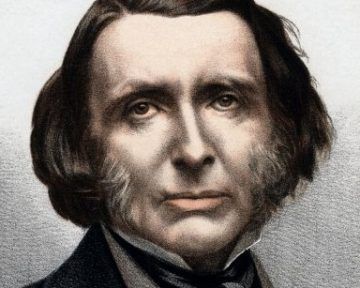Sean Sheehan at the Dublin Review of Books:
 Ruskin was twenty-six when, in 1845, on his third trip to Venice but seeing the paintings of Tintoretto there for the first time, he wrote excitedly to his father and urged him to put the artist he called Tintoret “at the top, top, top of everything”. On first walking into La Scuola Grande Di San Rocco, today’s visitor is still likely to feel some of the astonishment that gripped Ruskin. Tintoretto spent more than twenty years decorating the Sala Superiore (“Upper Hall”) and he was given free rein by his patrons. He could express himself freely and was less bound by the need to compete with his rival Veronese. Beginning with magnificent ceiling paintings and aware of the prestige he could achieve, Tintoretto offered to paint the sala’s walls for a modest annuity. The result, an astonishing torrent of exuberant inventiveness and extravagant theatricality, was a revelation for Ruskin and caused him to completely rethink the completion of his Modern Painters work: “I have been quite upset in all my calculations by that rascal Tintoret – he has shown me some totally new fields of art and altered my feelings in many respects.” His focus on landscape painting now shifted to the religious painters of the Old Masters and Emma Sdengo, in Looking at Tintoretto with John Ruskin, sees Turner – who had studied Tintoretto – as priming Ruskin’s discovery of “that rascal Tintoret”.
Ruskin was twenty-six when, in 1845, on his third trip to Venice but seeing the paintings of Tintoretto there for the first time, he wrote excitedly to his father and urged him to put the artist he called Tintoret “at the top, top, top of everything”. On first walking into La Scuola Grande Di San Rocco, today’s visitor is still likely to feel some of the astonishment that gripped Ruskin. Tintoretto spent more than twenty years decorating the Sala Superiore (“Upper Hall”) and he was given free rein by his patrons. He could express himself freely and was less bound by the need to compete with his rival Veronese. Beginning with magnificent ceiling paintings and aware of the prestige he could achieve, Tintoretto offered to paint the sala’s walls for a modest annuity. The result, an astonishing torrent of exuberant inventiveness and extravagant theatricality, was a revelation for Ruskin and caused him to completely rethink the completion of his Modern Painters work: “I have been quite upset in all my calculations by that rascal Tintoret – he has shown me some totally new fields of art and altered my feelings in many respects.” His focus on landscape painting now shifted to the religious painters of the Old Masters and Emma Sdengo, in Looking at Tintoretto with John Ruskin, sees Turner – who had studied Tintoretto – as priming Ruskin’s discovery of “that rascal Tintoret”.
more here.
